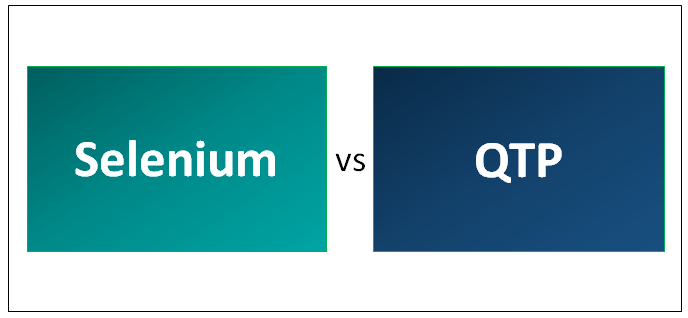Introduction
As businesses embrace digital transformation, automated testing has become a critical part of the software development lifecycle. Automation ensures that applications run efficiently across different environments and platforms, with minimal human intervention. Among the many testing tools available, Selenium and QTP are two of the most prominent. Whether you are considering Selenium automation testing for your next project or exploring a Selenium Certification, understanding the key differences between these tools is essential.
Both tools Selenium and QTP help automate repetitive tasks, reduce human errors, and boost productivity, but there are significant differences in how they function, their compatibility with various browsers, their cost-effectiveness, and the level of support they offer. Let’s explore these differences in detail.Any web-based application that is manually tested requires a significant amount of time, resources, and money. Rapid application testing cannot be accomplished solely by manual intervention. Here, automation enters the picture to minimize or completely do away with manual testing. Selenium and QTP are two regularly used tools that are available to help with the automated testing of websites.
In order to assist testers in making decisions about which tool would best serve their needs, this article compares Selenium and QTP/UFT. Check out the Selenium automation testing to learn more about Selenium.
What is Selenium?
Selenium is a powerful tool used for automating web applications for testing purposes. As an open-source software, it allows developers and testers to automate repetitive tasks, such as filling out forms, clicking buttons, or verifying elements on web pages, across different browsers. This flexibility makes Selenium one of the most popular choices in the field of automation testing. It supports multiple programming languages like Ruby, Java, Python, PHP, Perl, C#, and NodeJS, which makes it adaptable for different developer ecosystems.

One of the key features of Selenium is its ability to interact with web browsers in a way that simulates a user’s behavior, but without the need for manual intervention. The browser driver acts as a bridge between the test scripts and the web browser, ensuring that commands are executed correctly on the specific browser instance being tested.
Selenium’s architecture is divided into multiple components, each designed to handle specific tasks in the testing process. These components include Selenium WebDriver, Selenium IDE (Integrated Development Environment), and Selenium Grid. Furthermore, Selenium Grid allows parallel execution of tests across different machines and browsers, significantly reducing the time taken to run large test suites.
What is QTP/UFT?
A tool named QTP, now known as UFT, was created to carry out automatic functional testing without periodically checking the system.
Microfocus changed the name of QTP to UFT (Unified Functional Testing). Functional testing, regression testing, and service testing are the main uses of the program. UFT allows testers to automate user behaviours on a web or client-based computer program, test those actions, and find faults that may arise. This holds true for the identical activities performed by multiple users on various Windows operating systems and browsers using various data sets. If designed and carried out effectively, automation using QTP/UFT can save a significant amount of time and money.
- Several software programs and their environments can be tested using QTP/UFT.
- In addition to automating non-UI test cases like file operations, database testing, desktop apps, etc., it is used to conduct UI-based test cases.
- On the Windows operating system, QTP/UFT functions with numerous browsers, including Chrome, Firefox, and others.
- Additionally, it aids in doing QA checks on the software being tested.
- It provides simple navigation, validation of the results, and report creation.
Differences Between Selenium and QTP: A Comprehensive Guide
In the rapidly evolving world of software testing, two tools that often come up for comparison are Selenium and QTP (QuickTest Professional). While both are widely used for automating tests in software development, each has its own unique features, capabilities, and best-use cases.
When it comes to automation testing, two of the most widely used tools are Selenium and QTP (UFT). Both tools have revolutionized how organizations test web applications, but they differ significantly in terms of features, ease of use, and compatibility. Understanding the key differences between Selenium and QTP can help testers and developers make an informed decision when choosing the right tool for their needs.
In this blog post, we’ll dive deep into the differences between Selenium and QTP (now known as UFT – Unified Functional Testing), providing insights that will help you make an informed decision on which tool best suits your automation needs.
Tool Type and Approach
Selenium:
- Selenium is an open-source tool primarily used for automating web applications across different browsers and platforms. It supports various programming languages like Java, Python, C#, Ruby, and JavaScript.
- Selenium offers flexibility in terms of scripting, allowing users to write their test scripts in the programming language of their choice.
- It supports a variety of web browsers, such as Google Chrome, Firefox, Safari, and Internet Explorer, and works seamlessly on different operating systems like Windows, macOS, and Linux.
QTP (UFT):
- QTP, now known as Unified Functional Testing (UFT), is a commercial testing tool developed by Micro Focus.
- Unlike Selenium, QTP is designed specifically for both web and desktop applications, with a focus on functional testing.
- It uses VBScript as its scripting language and allows testers to automate tests without extensive programming knowledge.
- UFT is primarily known for its integrated environment, which provides features like record-and-playback functionality, making it user-friendly for testers with less coding experience.
Supported Platforms
Selenium:
- Selenium supports cross-platform testing, meaning you can run the same tests on different browsers and operating systems (OS). This flexibility is one of the key reasons why Selenium automation testing is a favorite among developers and testers.
- Selenium can run on Windows, macOS, and Linux, allowing teams to test on various OS platforms without switching tools.
QTP (UFT):
- QTP (UFT) supports a broader range of platforms, including web, mobile (through integration with tools like Appium), and desktop applications. However, it mainly supports testing on Windows environments.
- While QTP offers limited cross-platform compatibility, it excels in automating desktop applications, a feature that Selenium does not natively support.
Programming Language Support
Selenium:
- Selenium is language-agnostic. It supports multiple programming languages such as Java, Python, C#, Ruby, and JavaScript, providing flexibility for developers to use the language they are most comfortable with.
- Selenium automation testing also allows integration with other tools and frameworks, such as JUnit, TestNG, and Maven, making it highly customizable.
QTP (UFT):
- QTP uses VBScript for scripting, which can be a limitation for testers who are not familiar with the language. VBScript is less popular compared to other programming languages, and as a result, it may require additional training for testers to become proficient.
- However, UFT also supports a few other scripting languages like JavaScript and C#, but its primary focus is on VBScript.
Cost
Selenium:
- One of the biggest advantages of Selenium is that it is open-source and completely free to use. This makes it an attractive option for small to medium-sized organizations and startups looking to reduce their testing costs.
- Since it’s open-source, the Selenium community provides continuous support, updates, and plugins to enhance its functionality.
QTP (UFT):
- QTP (UFT) is a commercial tool with significant licensing costs. Although it offers a wide range of features, including robust support for both functional and regression testing, its high cost can be prohibitive for small businesses or teams with limited budgets.
- The licensing model for UFT is based on the number of users or testers, which can add up over time, making it a less cost-effective solution compared to Selenium.
Selenium is a free, open-source tool, while QTP requires a paid license, making Selenium and QTP differ significantly in terms of cost.
Test Execution
Selenium:
- Selenium allows parallel test execution across multiple browsers and platforms, which significantly reduces testing time.
- It supports integration with tools like Selenium Grid, which facilitates running tests on a distributed network of machines.
- Selenium tests can be run in the cloud using services like Sauce Labs and BrowserStack, allowing teams to conduct testing on a variety of real devices and browsers.

QTP (UFT):
- QTP (UFT) supports parallel test execution but is limited compared to Selenium when it comes to running tests on multiple browsers or platforms simultaneously.
- UFT’s test execution is more suitable for applications in a controlled environment but can be restrictive for teams that require cross-browser or cross-platform testing.
Selenium and QTP both offer test execution capabilities, with Selenium supporting parallel execution across multiple browsers and platforms, while QTP excels in testing applications within a single environment.
Ease of Use
Selenium:
- Selenium requires a good understanding of programming to create efficient and robust test scripts, making it more suitable for developers and experienced testers.
- Although Selenium provides flexibility in terms of test creation, it lacks the user-friendly, record-and-playback functionality that QTP offers.
QTP (UFT):
- QTP is known for its ease of use, with a built-in record-and-playback feature. This allows testers with minimal coding knowledge to automate test cases by simply recording user actions.
- The integrated development environment (IDE) of UFT makes it more accessible to testers who may not have extensive programming experience.
The ease of use in Selenium and QTP differs significantly, with Selenium requiring programming knowledge while QTP offers a more user-friendly, record-and-playback interface for testers with less coding experience.
Community Support and Documentation
Selenium:
- Being an open-source tool, Selenium boasts a large and active global community of developers and testers. There are extensive resources available, including forums, blogs, online tutorials, and documentation, which makes it easy for testers to learn and troubleshoot.
- The Selenium automation testing community is constantly improving the tool, with frequent updates, plugins, and integration options.
QTP (UFT):
- UFT, being a commercial product, has professional support available through Micro Focus. However, the community support is smaller compared to Selenium, and most resources are part of paid subscriptions.
- UFT has a comprehensive knowledge base and documentation, but access to advanced materials may require a paid support plan.
Both Selenium and QTP offer strong community support and documentation, with Selenium benefiting from an active open-source community
Conclusion
Both Selenium and QTP (UFT) have their own strengths and weaknesses. If you’re focused on web application testing and need a cost-effective, flexible, open-source solution, Selenium is the clear choice. It offers extensive browser support, a wide range of integrations, and is highly customizable. On the other hand, if you’re working on a project that involves both web and desktop applications, require a commercial solution, and prefer an easy-to-use interface, QTP (UFT) might be more suitable.
Ultimately, the choice between Selenium and QTP comes down to factors like cost, the nature of the application being tested, required programming skills, and the platforms supported. Organizations must evaluate their specific needs before making the decision.
Key Takeaways
- Selenium is free, open-source, and supports web automation across multiple browsers and platforms.
- QTP (UFT) is a paid tool that supports both web and desktop applications with a record-and-playback feature.
- Selenium is more suitable for those who have programming expertise, while QTP is better for testers with minimal coding knowledge.
- For Selenium Certification, learning and mastering Selenium is an invaluable asset for anyone pursuing a career in automation testing.
If you’re looking to become proficient in Selenium automation testing or earn your Selenium Certification, H2K Infosys offers comprehensive training programs that cover everything from the basics to advanced automation testing techniques. Enroll today to enhance your skills and advance your career in automation testing!

























